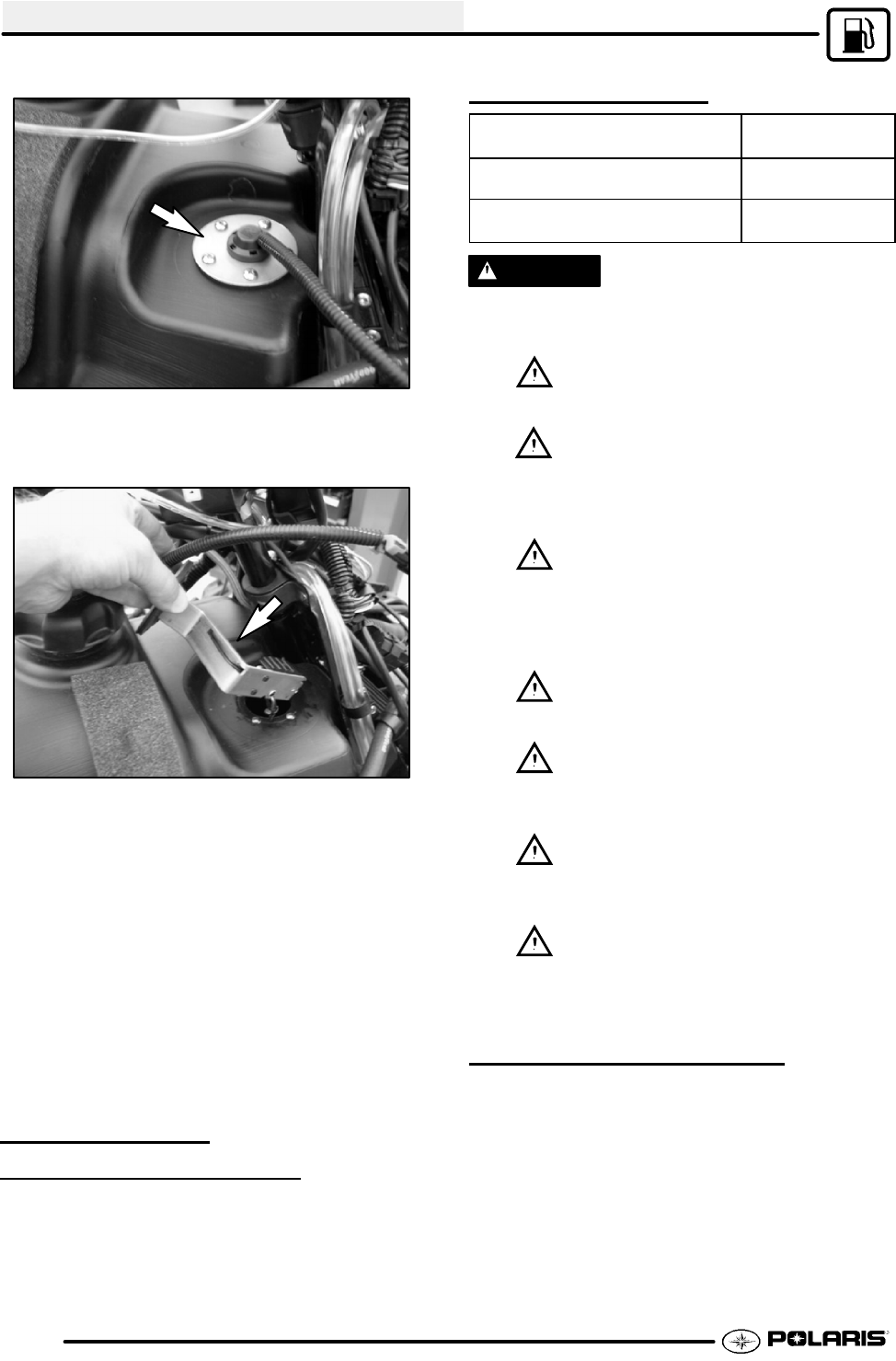
FUEL SYSTEM/CARBURETION
4.6
7. Slowly lift the sender out of the tank. Lift the
sender out atan angle, sothe float willmore easily
come out of the fuel tank.
Fuel Sender Installation
1. Reinstall the fuel sender and a new gasket.
2. Install the 5 screws and torque the screws to
18--24 in.lbs. (2--3 Nm) in a criss cross pattern.
Reconnect the sender wiring harness and route
the harness properly.
3. Reinstall the PVT intake duct, gas tank vent line,
front cab assembly, and side panels.
NOTE: Properly route the gastank vent line, use tape
tosecuretheventlineinplace.(SeePic1).
4. Reconnect the negative battery cable. Test the
sender for proper operation.
FUEL SENDER
TROUBLESHOOTING
Refer to Chapter 10 for fuel sender troubleshooting.
SPECIAL TOOLS
PART NUMBER TOOL
DESCRIPTION
2870975 Mity Vact
Pressure Test Tool
2872314 Carburetor Float
Adjustment Tool
WARNING
Gasoline is extremely flammable and explosive under
certain conditions.
Always stop the engine and refuel
outdoors or in a well ventilated area.
Do not overfill the tank. The tank is at
full capacity when the fuel reaches the
bottom of the filler neck. Leave room
for expansion of fuel.
Never start the engine or let it run in an
enclosed area. Gasoline powered engine
exhaust fumes are poisonous and can
cause loss of consciousness and death in
a short time.
Never drain the float bowl when the engine
is hot. Severe burns may result.
Do not smoke or allow open flames or
sparks in or near the area where refueling
is performed or where gasoline is stored.
If you get gasoline in your eyes or if you
should swallow gasoline, seek medical
attention immediately.
If you spill gasoline on your skin orclothing,
immediately wash with soap and water and
change clothing.
JETTING GUIDELINES
Changes in altitude and temperature affect airdensity,
which is essentially the amount of oxygen availablefor
combustion. In low elevations and cold temperatures,
the air is more dense and has more oxygen. In higher
elevations and higher temperatures, the air is less
dense with reduced oxygen.
Polaris ATV Carburetors are calibrated for an altitude
of 0-6000 ft. (0-1800 meters) and ambient
temperatures between +40 and +80° F(+5° to +26°
C). Carburetors must be re-calibrated if operated


















